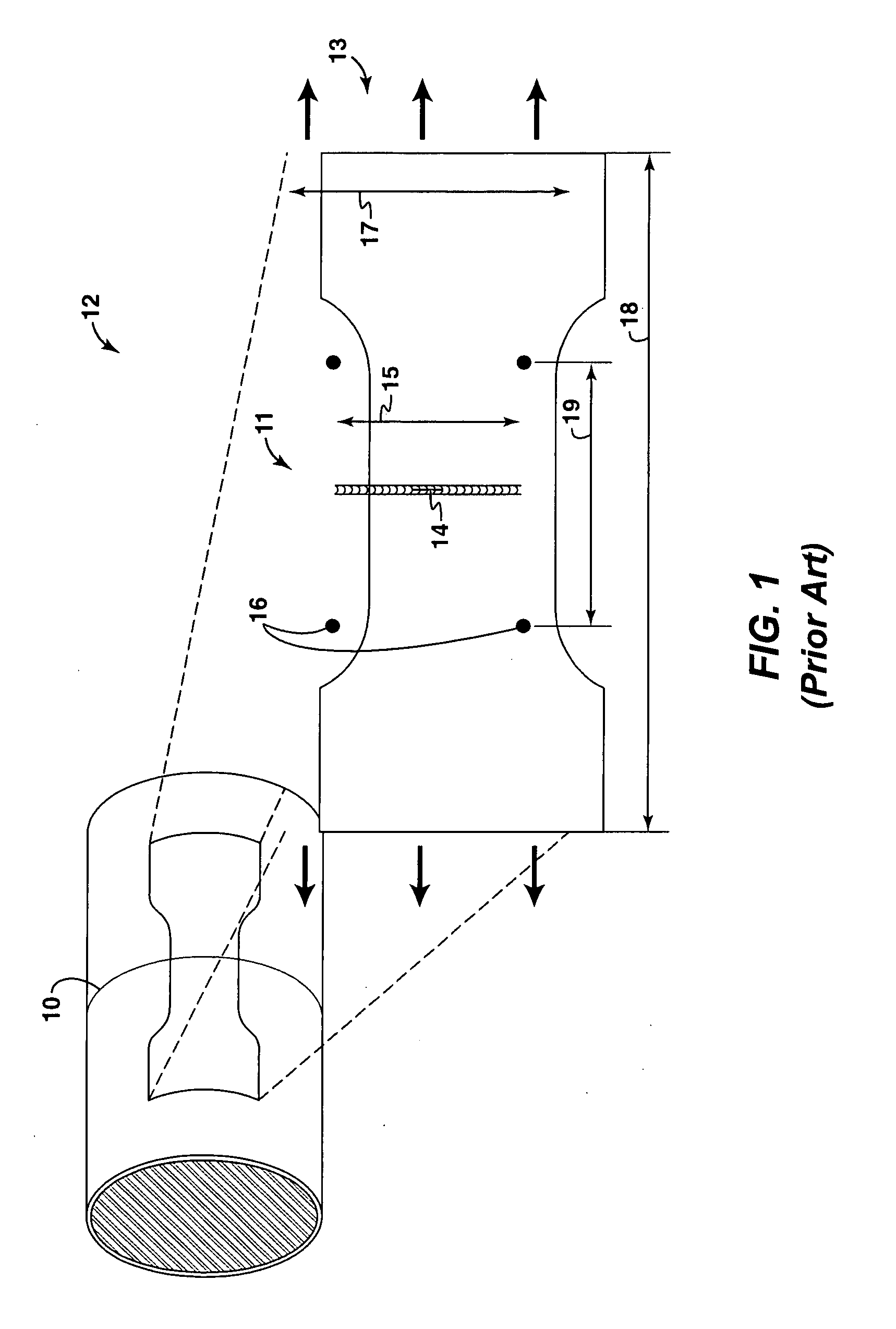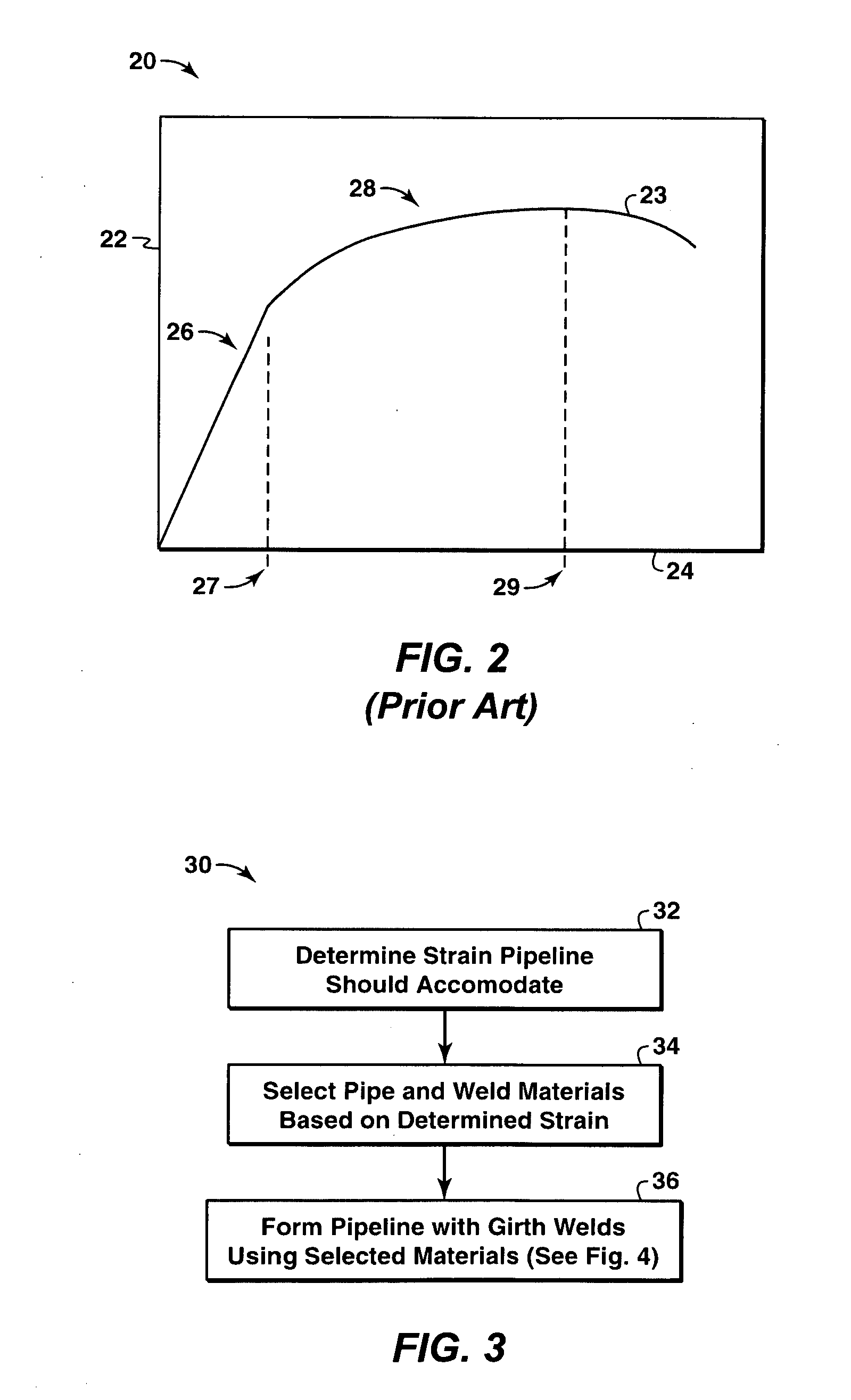Corrosion Resistant Alloy Weldments In Carbon Steel Structures and Pipelines To Accommodate High Axial Plastic Strains
a technology of corrosion resistance and alloy welds, which is applied in the direction of service pipe systems, manufacturing tools, and solventing apparatus, etc., can solve the problems of limited global plastic strain capacity of pipelines, which may be referred to as global strain capacity, and achieve the effect of simplifying the weld testing and qualification regimen
- Summary
- Abstract
- Description
- Claims
- Application Information
AI Technical Summary
Benefits of technology
Problems solved by technology
Method used
Image
Examples
Embodiment Construction
Introduction and Definitions
[0023]Embodiments of the present invention provide a method and apparatus that may be used to join two ferritic metals using austenitic weld materials.
[0024]Joining tubular sections of a pipeline made of a material exhibiting a primarily ferritic microstructure is a specific, but not limiting, example of an application in which techniques in accordance with embodiments of the present invention may be used to advantage. However, those skilled in the art will recognize that similar techniques may also be used in a variety of other applications, for example, where high axial loading and plastic strains are expected.
[0025]As used herein, the term strain-based design refers to the design of a structure such that the environmental and operational loads are quantified in terms of the applied strains and the limits on loads are expressed in terms of strain limits that allow a certain amount of plastic strain to occur.
[0026]As used herein, the term corrosion resis...
PUM
| Property | Measurement | Unit |
|---|---|---|
| Fraction | aaaaa | aaaaa |
| Fraction | aaaaa | aaaaa |
| Volume | aaaaa | aaaaa |
Abstract
Description
Claims
Application Information
 Login to View More
Login to View More - R&D
- Intellectual Property
- Life Sciences
- Materials
- Tech Scout
- Unparalleled Data Quality
- Higher Quality Content
- 60% Fewer Hallucinations
Browse by: Latest US Patents, China's latest patents, Technical Efficacy Thesaurus, Application Domain, Technology Topic, Popular Technical Reports.
© 2025 PatSnap. All rights reserved.Legal|Privacy policy|Modern Slavery Act Transparency Statement|Sitemap|About US| Contact US: help@patsnap.com



